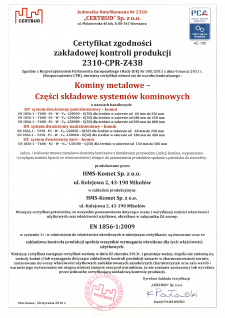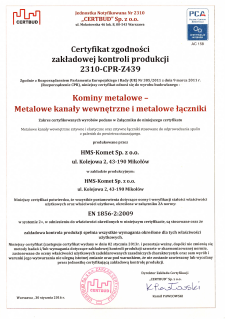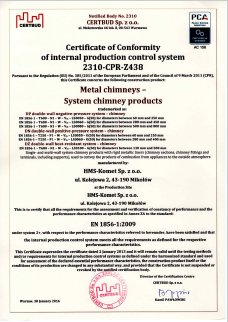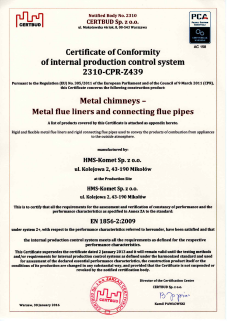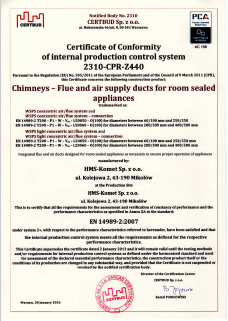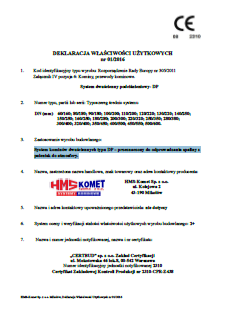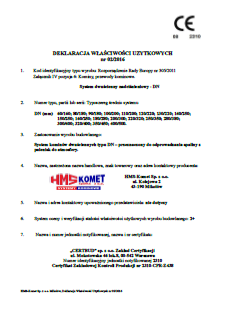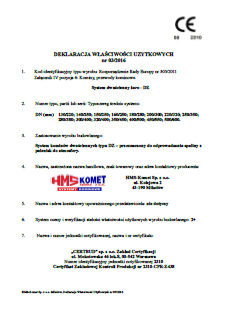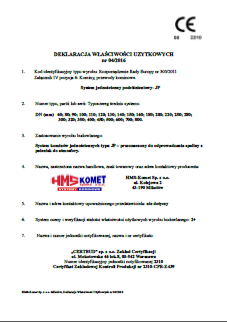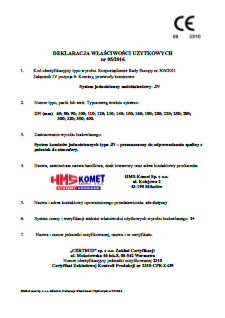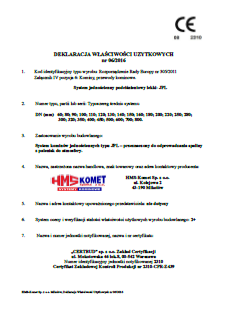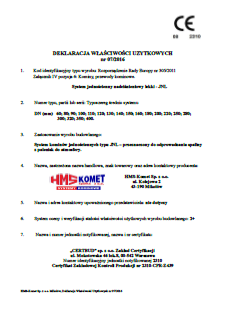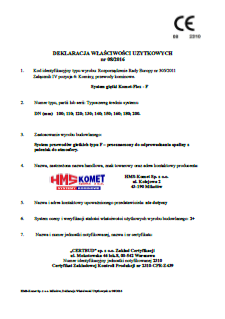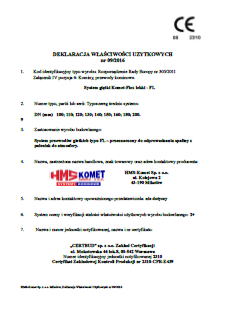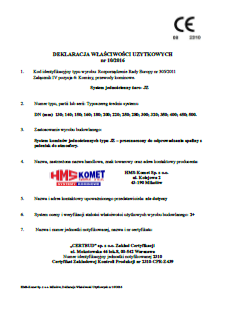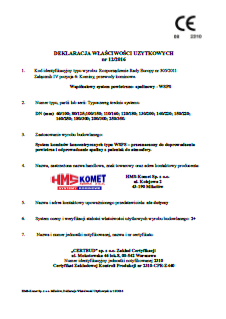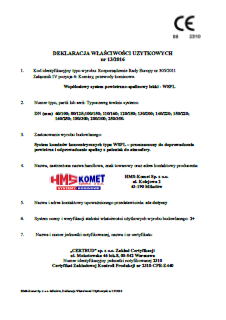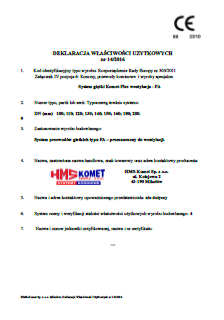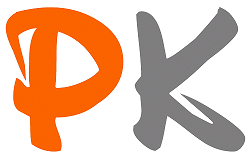Certyfikaty - Deklaracje - Atesty
Wymagany program do wyświetlenia dokumentów Adobe Acrobat
Certyfikaty PL
Certyfikaty
Wyroby kominowe bez oznakowania CE nie mogą być wprowadzane do obrotu na terenie Unii Europejskiej. Aby oznakować wyrób znakiem CE, producent wykonuje badania i analizy dla spełnienia wymagań, a następnie poddaje produkty procedurze oceny zgodności z odpowiednimi dyrektywami. Procedura oceny zgodności wyrobów wymaga udziału tzw. Jednostki Notyfikującej. Jest to organizacja wyznaczona przez władze krajowe do wykonywania zadań wynikających z dyrektyw. Znak CE nie wskazuje, że wyrób został wytworzony na terenie EEA, a jedynie że jego producent poświadcza fakt, iż wyrób został przez niego poddany właściwej ocenie zgodności przed wprowadzeniem go na rynek i tym samym spełnia wymagania prawne. Producent wyrobu sam umieszcza na nim znak CE, ale musi uprzednio przedsięwziąć odpowiednie kroki. Jego obowiązkiem jest przeprowadzenie kontroli zgodności, stworzenie dokumentacji technicznej i podpisanie deklaracji właściwości użytkowych.
Kraje, w których jest wymagane oznaczenie CE
Znakowanie CE jest obowiązkiem dla pewnych grup wyrobów w Europejskim Obszarze Gospodarczym (EEA), w których skład wchodzi 28 państw członkowskich UE, kraje EFTA oraz Turcja. Znak ten jest również obowiązkowy dla wszystkich wyrobów wytworzonych w krajach trzeciego świata, a sprzedawanych w strefie EEA. W takim przypadku importer musi się upewnić, że wytwórca spoza UE podjął niezbędne kroki, pozwalające mu umieścić na swym wyrobie znak CE. Jeżeli tego nie uczynił – importer musi niejako przejąć obowiązki producenta, w celu wprowadzenia tego wyrobu na obszar EEA.
Certificates EN
Certificates
Chimney products without the CE marking may not be placed on the market in the European Union. To mark a product with the CE mark, the manufacturer performs tests and analyzes to meet the requirements, and then subjects the products to a procedure for assessing compliance with the relevant directives. The product conformity assessment procedure requires the participation of so-called Notifying Body. It is an organization designated by national authorities to carry out tasks arising from directives. The CE mark does not indicate that the product was manufactured in the EEA, but only that its manufacturer certifies the fact that the product has been subjected to proper conformity assessment by the manufacturer before placing it on the market and thus meets legal requirements. The manufacturer of the product affixes the CE mark to it himself, but must first take the appropriate steps. His duty is to carry out compliance checks, create technical documentation and sign the declaration of performance.
Countires where CE marking is required
CE marking is a must for certain product groups in the European Economic Area (EEA), which consists of 28 EU Member States, EFTA countries and Turkey. This mark is also mandatory for all products manufactured in third world countries and sold in the EEA zone. In this case, the importer must ensure that the non-EU manufacturer has taken the necessary steps to enable him to affix the CE mark to his product. If he has not done so - the importer must somehow take over the manufacturer's obligations in order to bring this product into the EEA.

